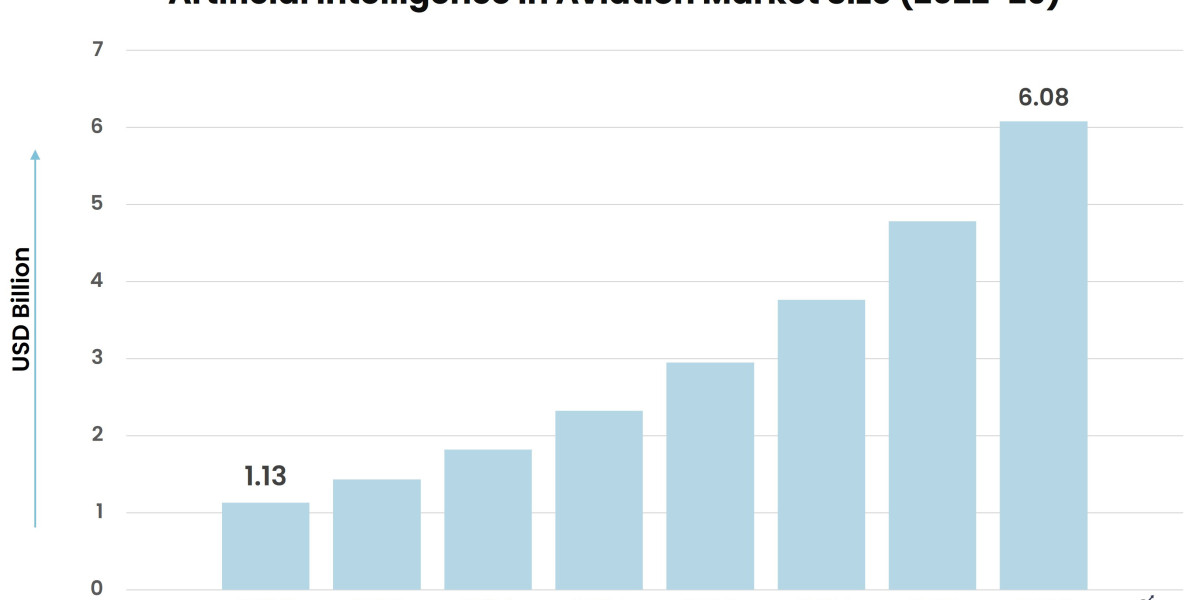Artificial intelligence (AI) is playing an increasingly transformative role in the aviation industry, reshaping operations, enhancing passenger experiences, and driving efficiencies across the sector. As the AI in aviation market continues to grow, several key drivers, challenges, and opportunities are emerging that will shape the future of this technology. Here’s a closer look at what’s fueling the rise of AI in aviation, the hurdles to its adoption, and the opportunities it presents.
According to Stratview Research, the artificial intelligence in aviation market was estimated at USD 1.13 billion in 2022 and is likely to grow at a CAGR of 27.2% during 2023-2029 to reach USD 6.08 billion in 2029.
Key Drivers of AI in Aviation
- Operational Efficiency and Cost Reduction: One of the primary drivers of AI adoption in aviation is its ability to streamline operations and cut costs. AI-powered systems enhance efficiency through predictive maintenance, helping airlines avoid costly delays and mechanical failures by identifying issues before they arise. In addition, AI is optimizing fuel management by calculating the most efficient flight paths, leading to significant savings on fuel consumption.
- Enhanced Passenger Experience: The demand for personalized and seamless passenger experiences is another significant driver. AI is being used to customize services such as flight recommendations, seat selections, and in-flight entertainment based on individual preferences. AI-powered chatbots and virtual assistants are streamlining communication with passengers, answering questions, and helping with bookings or changes, thus improving customer service while reducing the workload for human staff.
- Autonomous Technologies: AI is at the forefront of advancements in autonomous technologies, from drone-based cargo transport to AI-enhanced autopilot systems. These technologies have the potential to revolutionize air travel by improving air traffic control, reducing pilot workload, and paving the way for unmanned aircraft systems (UAS) that could one day serve commercial purposes.
Challenges to AI Adoption
- High Implementation Costs: Despite the benefits, integrating AI into existing aviation systems requires significant investment. The development and deployment of AI technologies, along with the necessary infrastructure and training, can be prohibitively expensive for many airlines, especially smaller carriers with limited resources.
- Data Security and Privacy Concerns: With the increased use of AI comes a higher reliance on vast amounts of data, including sensitive passenger information. Ensuring robust cybersecurity measures to protect against data breaches and cyberattacks is a major concern for airlines and regulators. Maintaining the privacy of passenger data while utilizing AI for personalization remains a challenge.
- Regulatory Barriers: The rapid development of AI technologies often outpaces regulatory frameworks, which can create uncertainty and hinder widespread adoption. Developing comprehensive and adaptive regulations that balance innovation with safety and security is essential for AI’s long-term success in aviation.
Key Opportunities
- Smart Airports and Automation: The rise of smart airports presents a significant opportunity for AI applications. From automating check-in and security screenings to improving baggage handling and airport navigation, AI can revolutionize the passenger experience while enhancing operational efficiency. Robots powered by AI are already being deployed in airports to guide passengers, clean facilities, and assist with customer service.
- Sustainability Initiatives: AI can play a pivotal role in helping the aviation industry meet sustainability goals. By optimizing fuel usage and improving air traffic management, AI can reduce carbon emissions and energy consumption. The push for greener, more sustainable air travel opens new avenues for AI innovation aimed at minimizing environmental impact.
- Data-Driven Insights and Decision-Making: As airlines increasingly rely on data to drive decision-making, AI offers the opportunity to analyze vast amounts of information in real time. This allows for smarter pricing strategies, route optimization, and improved demand forecasting, leading to increased profitability and more efficient operations.
Conclusion
The AI in aviation market is poised for rapid growth, driven by the need for efficiency, personalized passenger experiences, and autonomous technologies. However, challenges such as high implementation costs, data security, and regulatory hurdles must be addressed. With advancements in smart airports, sustainability, and data-driven decision-making, AI presents enormous opportunities to revolutionize the aviation industry for years to come.



